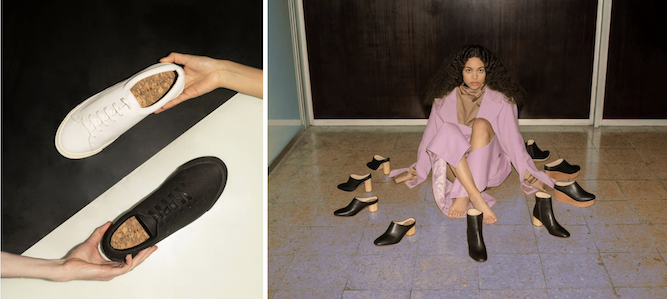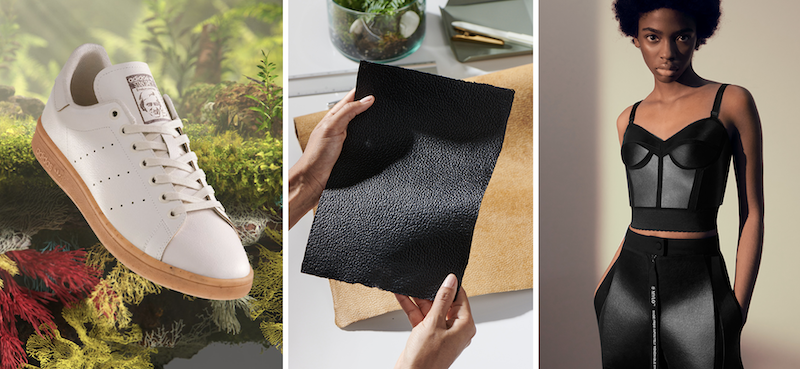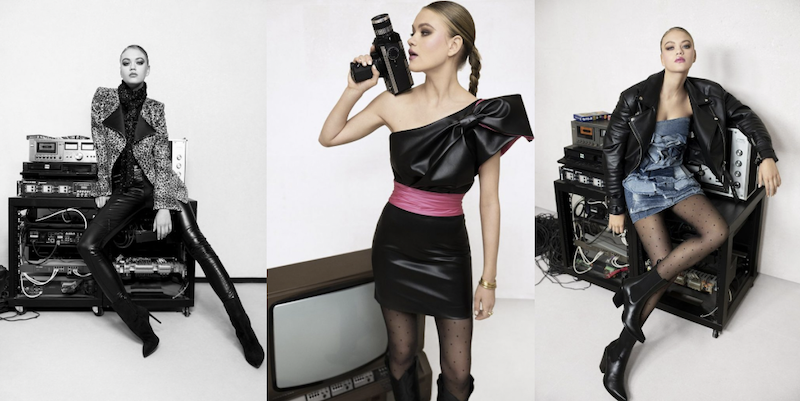Table of Contents
Like many things these days, the choice between animal leather or vegan leather is nuanced. As conscious consumers, it can be difficult to keep up with all of the industry innovations and it seems that every alternative is up for debate regarding its impact on the environment, so let’s take a look at some of the sustainability factors of animal leather versus alternative leather.
It is well known that the meat industry is far from sustainable and leather products are by-products of the meat industry, right?... In actuality leather should be considered a co-product of a perpetually unsustainable industry.
Animal leather:
It is well known that the meat industry is far from sustainable and leather products are by-products of the meat industry, right? If their hides weren’t turned into leather products, the hides would end up in landfills…or so we are led to believe. In actuality leather should be considered a co-product of a perpetually unsustainable industry.

Presently, around 290 million cows are killed every year to provide leather for clothing and bags and furniture, but to keep up with demand, it is projected that 430 million cows will be slaughtered annually by 2025. These horrific facts have pushed for vegan alternatives, however there are many factors to consider when looking into either animal or vegan leather including animal welfare, waste, greenhouse gas emissions, water usage, and the tannins needed to get the malleability of leather. Of course, this can’t go without saying that when leather is well taken care of, it holds added value, is long lasting, durable and biodegradable, but the cumulative effect on the environment is massive. The tanning process is especially harmful as hides are put in a highly toxic chromium salt bath, of which the remaining water needs to be disposed of. A new way of vegetable tanning has been found to be less harmful, but it is more expensive and requires careful skill.
Vegan leather:
Unfortunately, the most common leather alternative is made from petroleum-based plastic, called polyvinyl chloride (PVC). This is derived from fossil fuels and is non-biodegradable and very rarely recycled. This poses a huge threat to natural ecosystems as synthetic fibers break down slowly and become microplastics. PVC, which also uses chemical dyes and excessive amounts of water, is just not a valid substitute for animal leather. But what is?

Plastic-free vegan leather:
Thankfully, innovative scientists are creating some amazing plastic-free vegan leather options ranging from mushrooms, to cork, to pineapple fibers and even kombucha cultures. The technology and understanding of these raw materials has made leaps and bounds over the last few decades, and are naturally more sustainable, less toxic and more compassionate towards animals. While some of these options do use some petroleum-based products to hold the fibers together, it is still significantly less than that of PVC leather. Ready to take a look at a few of these innovative leather alternatives?
Thankfully, innovative scientists are creating some amazing plastic-free vegan leather options ranging from mushrooms, to cork, to pineapple fibers and even kombucha cultures. The technology and understanding of these raw materials has made leaps and bounds over the last few decades, and are naturally more sustainable, less toxic and more compassionate towards animals. While some of these options do use some petroleum-based products to hold the fibers together, it is still significantly less than that of PVC leather. Ready to take a look at a few of these innovative leather alternatives?
UlStO is a Germany-based company that focuses on creating unique bags and accessories creating their beautiful cork items locally and with ethical working conditions. Their slogan is “Cork to Carry” so you can take a piece of nature with you.

© Sydney Brown
Sydney Brown is another brand that uses cork in a holistic manner to create environmentally friendly bag and shoe designs.
Waxed canvas, although it has been around for a long time, is making a name for itself as a leather alternative. It is usually a cotton-based canvas, although the base can be replaced with hemp or flax, and it is very durable and waterproof. Although cotton has concerning environmental impacts, they are far lesser than that of leather. It is also possible for the paraffin wax (polyester-based), to be replaced with beeswax or even soy wax.

© Gore-Tex
Gore-Tex brand is working on their sustainability report to shorten their supply chain and limit their environmental impact.
Treesizeverse is another brand that uses waxed canvas and Piñatex to create beautiful, effortlessly stylish bags ranging from backpacks to purses. Each piece is individually made with great care and attention to detail.
What started as a love and adoration for our ocean, turned into Two Thirds, a brand that has the ocean running through its veins. From their choice of colour and fabric to their production location, you can sense the close relationship this brand has to nature.
Two Thirds offers quality garments for Him and Her, everyday casual wear with a touch of mountain romance.
The efforts made to protect our big blue planet and the people and animals it touches upon is well reflected in their collections and company values. All production is located in Portugal, close to Spain, where the brand is based.

© Bolt Threads
Bolt Threads has commercialized spider silk and Mylo mushroom leather to create meaningful products that are consumer-accessible. Spider silk is exceptionally strong, lightweight, stretchable, soft and biodegradable, and Mylo is both petroleum-free and animal-free. In collaboration with Chester Wallace, Bolt technology created the Driver Bag, a travel bag which is considered the world’s first mushroom-based leather bag.
Mycoworks is another company that has turned mycelium mushrooms and agricultural by-products into sustainable, versatile leather. Mycelium material is strong, flexible, and durable, and is also water-resistant!
Lab-grown leather is another promising alternative being developed using cells and proteins for bio fabrication of leather.
Modern Meadow’s ZOA Materials brand uses science to grow collagen cells that make a material that feels and looks like leather. The process begins with yeast which is then fermented to make proteins which are then bio-engineered into usable material.

© Vegea
Vegea is a Milan based brand that makes fully synthetic materials for fashion, furniture, packaging, automotive & transportation. They found a way to bridge chemistry and agriculture to create a plant-based alternative to leather. Companies that use Vegea include these: & other stories, Bentley for the interior of their new EXP 100 GT, and H&M as part of their Conscious Exclusive line.
Plant leathers are also being made by the scoby of kombucha and from pineapple leaves, both of which are tough, versatile, eco-friendly and can decompose back into the earth at the end of life. Kombucha – A sustainable film made from a byproduct of kombucha tea could be a new material for clothing, shoes, or handbags. The fiber is 100 percent biodegradable.
Sacha Laurin has made kombucha clothing with attention-getting designs. She began her adult career as a cheese maker and took her technique of fermenting milk with bacteria to then create green tea SCOBYs (Symbiotic Colony of Yeast and Bacteria) has enabled her to transform them into living clothing and fashion.
Molly Ryan is another designer working on circularity in her fashion. She even created her own capsule wardrobe.

© Ananas Anam
Piñatex is a natural textile made from pineapple leaf fiber, the by-products of the fruit industry that is normally burned or discarded. The fibre is stripped from the leaf and the leftover biomass is then able to be retained and used as a natural biofuels. The company also works with local communities in the Philippines growing pineapples and strengthening their local exports. The company is working toward a circular economy by careful management throughout the lifecycle of the product. Large brands like Hugo Boss, Po-Zu, Votch, and Nae have used Piñatex leather in their collections!
As a final thought, the best choice is to always use less, re-use, and consider the brands you’re purchasing by reading labels, asking questions and taking care of your products, leather or vegan leather as long as possible. And if none of these options feel tight to you, there are always amazing plant-based fibers like linen, hemp or organic cotton.








